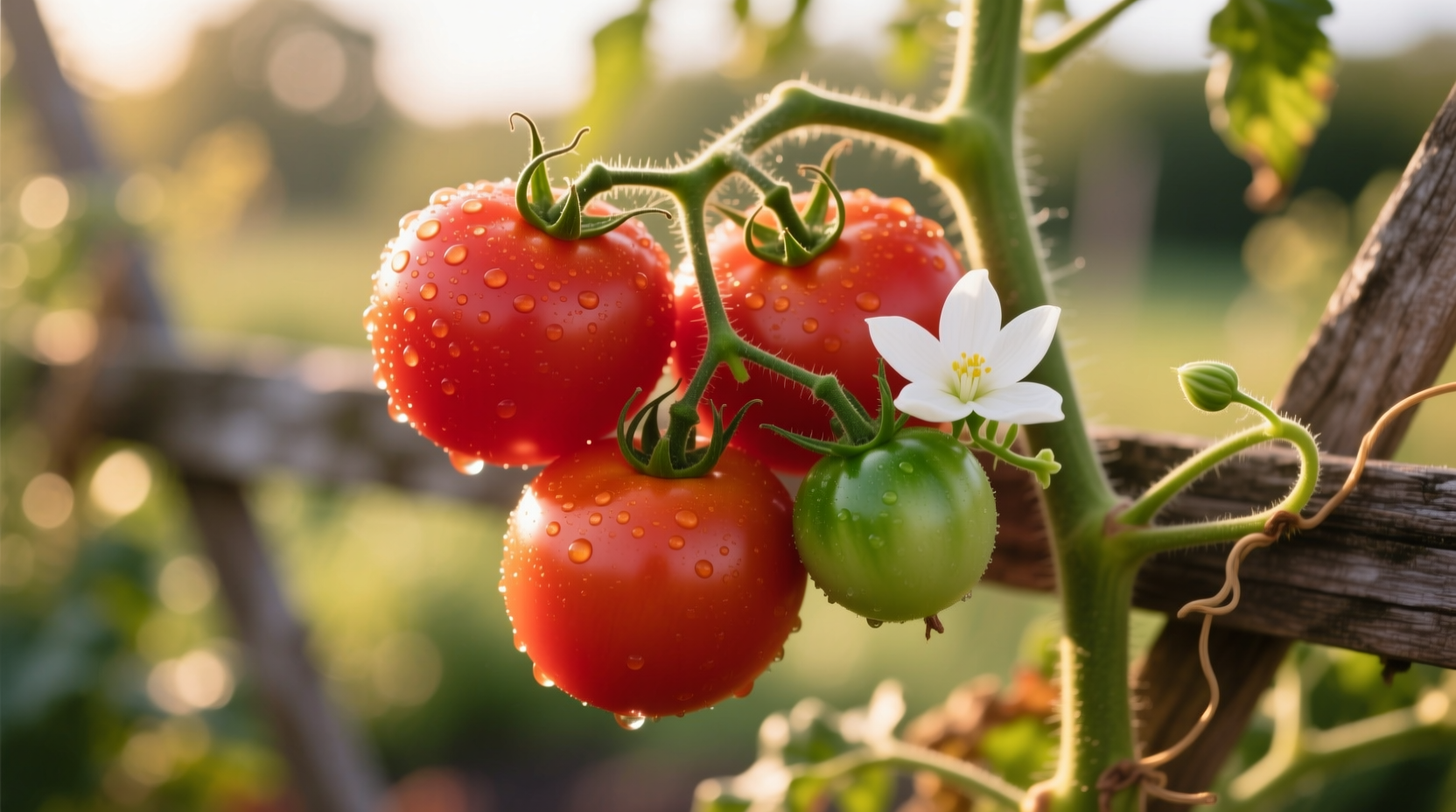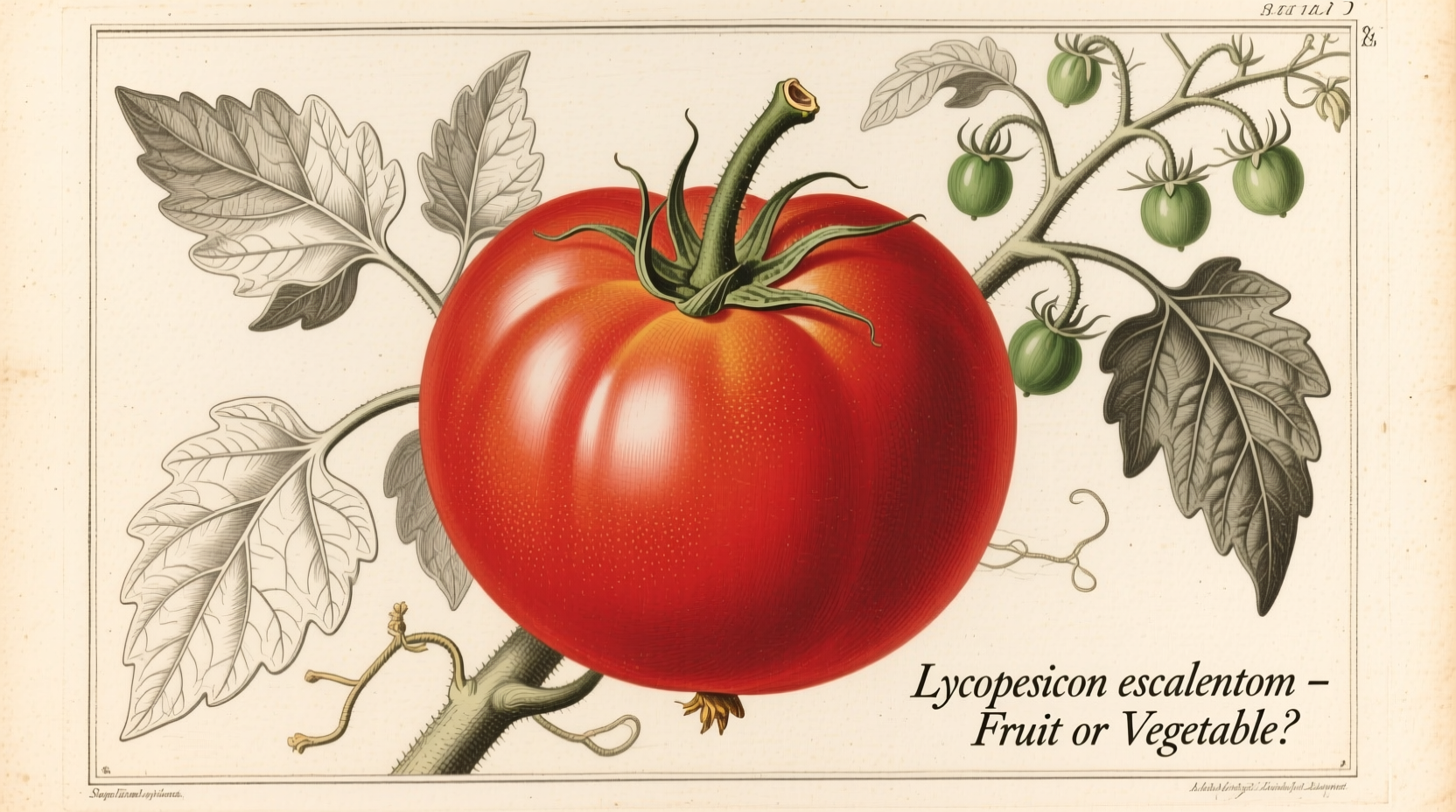Confused about whether a tomato is a fruit or vegetable? You're not alone. This question has sparked debates among chefs, scientists, and even Supreme Court justices for over a century. Understanding this classification isn't just academic—it affects how we cook, garden, and even how foods are regulated. Let's cut through the confusion with science-backed clarity.
The Botanical Reality: Why Tomatoes Are Fruits
From a strict botanical perspective, tomatoes unequivocally qualify as fruits. In plant biology, a fruit is defined as the mature ovary of a flowering plant, typically containing seeds. Tomatoes develop from the flower of the Solanum lycopersicum plant and house numerous seeds within their fleshy interior.
More specifically, tomatoes are classified as berries—a subcategory of fruits where the entire pericarp (fruit wall) is fleshy. This might surprise you, as common understanding often associates berries with small fruits like blueberries. However, botanically speaking, bananas, cucumbers, and eggplants also qualify as berries.
| Classification Type | Fruit Characteristics | Vegetable Characteristics |
|---|---|---|
| Botanical | Develops from flower ovary, contains seeds | Refers to other plant parts (roots, stems, leaves) |
| Culinary | Sweet flavor, used in desserts/snacks | Savory flavor, used in main dishes/sides |
| Legal (U.S.) | No specific legal definition | Classified as vegetables for tariff purposes |
The Legal Landmark: Nix v. Hedden (1893)
The tomato's vegetable designation entered American law through a pivotal Supreme Court case. In 1883, U.S. tariff laws required import duties on vegetables but not fruits. When John Nix & Company attempted to import tomatoes without paying the vegetable tariff, customs official Edward L. Hedden blocked the shipment.
The case reached the Supreme Court in 1893, where justices examined tomato classification through multiple lenses:
- Botanical testimony: Experts confirmed tomatoes met the scientific definition of fruits
- Culinary practice: Chefs and grocers testified tomatoes were used like vegetables in cooking
- Common understanding: The Court noted people "speak of peas as vegetables, and botanically they are fruits"
In a unanimous decision, the Court ruled tomatoes should be classified as vegetables for tariff purposes, establishing the principle that common usage trumps botanical accuracy in legal and culinary contexts. You can read the full decision on the Justia U.S. Supreme Court Center.
Why the Distinction Matters in Your Kitchen
Understanding this classification isn't just academic—it directly impacts how you cook:
- Flavor development: Tomatoes' acidity (pH 4.3-4.9) makes them excellent for balancing rich dishes, unlike most sweet fruits
- Cooking techniques: Chefs treat tomatoes like vegetables—roasting, stewing, and incorporating into savory sauces
- Nutritional pairing: Tomatoes' lycopene (a powerful antioxidant) absorbs better when cooked with healthy fats
The USDA's FoodData Central database categorizes tomatoes with vegetables for dietary guidance, reflecting their typical culinary role despite botanical classification.

When Tomatoes Act Like Fruits
While primarily used as vegetables, tomatoes occasionally cross into fruit territory:
- Sweet varieties: Heirloom tomatoes like Golden Jubilee have higher sugar content (up to 5%) and work in fruit salads
- Preserves: Tomato jam leverages their fruit characteristics with sugar and acid
- Beverages: Bloody Mary cocktails use tomato juice as a base similar to fruit juices
However, these applications remain exceptions that prove the rule. Unlike true culinary fruits, tomatoes rarely appear in desserts—their savory umami compounds (glutamates) make them incompatible with sweet preparations.
Global Perspectives on Tomato Classification
The fruit-vegetable debate isn't universal. In many cultures, the distinction doesn't exist as it does in English:
- Spanish: "Tomate" falls under "verdura" (vegetable) regardless of botanical classification
- French: "Légume" encompasses both culinary vegetables and botanical fruits like tomatoes
- Japanese: "野菜" (yasai) includes tomatoes despite their botanical fruit status
This linguistic difference explains why the tomato classification debate is particularly American—stemming directly from that 1893 tariff law.
Practical Takeaways for Home Cooks
Forget the academic debate—here's how to use this knowledge:
- Storage: Keep tomatoes at room temperature away from direct sunlight (refrigeration damages flavor compounds)
- Cooking: Add acidic ingredients like wine early when cooking tomatoes to balance their natural acidity
- Gardening: Rotate tomato plants annually to prevent soil-borne diseases (a practice used for vegetable crops)
- Nutrition: Pair tomatoes with healthy fats like olive oil to increase lycopene absorption by up to 4 times
Whether you call it a fruit or vegetable, tomatoes deliver remarkable health benefits. According to the USDA Agricultural Research Service, regular tomato consumption is associated with reduced risk of heart disease and certain cancers due to their rich antioxidant profile.
Common Misconceptions Debunked
Let's address some persistent myths:
- "Tomatoes were declared vegetables by law"—Actually, the Supreme Court acknowledged they're botanically fruits but legally vegetables for tariff purposes only
- "All berries have seeds on the outside"—Strawberries are the exception; most berries (including tomatoes) have internal seeds
- "Green tomatoes are unripe"—Some varieties like Green Zebra remain green when fully ripe











 浙公网安备
33010002000092号
浙公网安备
33010002000092号 浙B2-20120091-4
浙B2-20120091-4